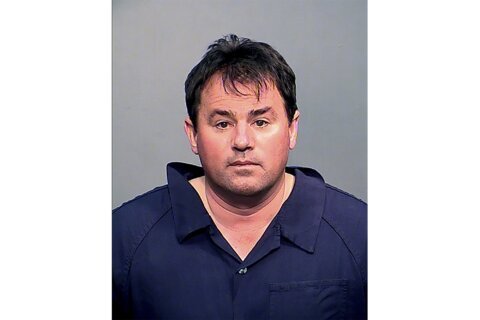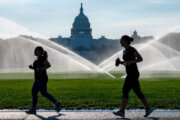PHOENIX (AP) — Tribal leaders in Arizona said Tuesday they hope to build on the momentum of President Joe Biden’s recent designation of a national monument in neighboring Nevada to persuade the administration to create similar protections for areas adjacent to the Grand Canyon, which they consider sacred.
“This designation is of the highest priority to the Hopi people,” said Timothy Nuvangyaoma, chairman of the tribe in northern Arizona. “We have to protect the beauty and grandeur of this place many tribes call home.”
Tribes in Arizona are looking to persuade Biden to use his authority under the Antiquities Act of 1906 to make the designation for a little more than 1 million acres (404,686 hectares), or about 1,560 square miles (4,000 square kilometers).
The announcement during a virtual news conference came days before Interior Secretary Deb Haaland is scheduled to visit Nevada. The state is home to Avi Kwa Ame, a newly designated monument on a desert mountain northwest of Laughlin — the largest community in the remote southern tip of the state — that some Native Americans consider sacred. Haaland will join Nevada’s congressional delegation and tribal leaders Friday in Las Vegas to celebrate the move.
Biden last month also granted national monument status to Castner Range, located on Fort Bliss in El Paso, Texas, and moved to create a national marine sanctuary in the central Pacific Ocean around the Pacific Remote Islands.
Rep. Raúl M. Grijalva, a ranking member of the House Natural Resources Committee and a Democrat representing southern Arizona, said the effort to have lands adjacent to the Grand Canyon named a national monument called Baaj Nwaavjo I’tah Kukveni is part of a sustained effort to protect Indigenous sacred and cultural sites.
“Baaj Nwaavjo” means “where tribes roam,” for the Havasupai people, while I’tah Kukveni translates to “our footprints,” for the Hopi tribe.
Grijalva in 2008 introduced legislation to withdraw about 1,560 square miles (4,000 square kilometers) around the park from mineral development, after uranium prices spiked in 2008 and more than 10,000 mining claims were filed on public lands.
That move prompted the Interior Department to launch an environmental analysis of uranium mining in the area, leading to a 2012 moratorium on new claims on those miles of federal land surrounding Grand Canyon National Park.
Grijalva said that although the 20-year ban remains in effect, the national monument designation is needed to offer permanent protections against mining that could damage areas import to tribes as well as the environment.
Arizona Sen. Kyrsten Sinema, an independent, and local elected officials also backed the campaign to have the Grand Canyon made a national monument.
Tribes and conservationists were startled in 2020 when a $1.5 billion proposal by then-President Donald Trump’s administration to prop up the country’s nuclear fuel industry emboldened at least one company to take steps toward boosting operations at dormant uranium mines around the West, including outside Grand Canyon National Park.
Copyright © 2024 The Associated Press. All rights reserved. This material may not be published, broadcast, written or redistributed.







